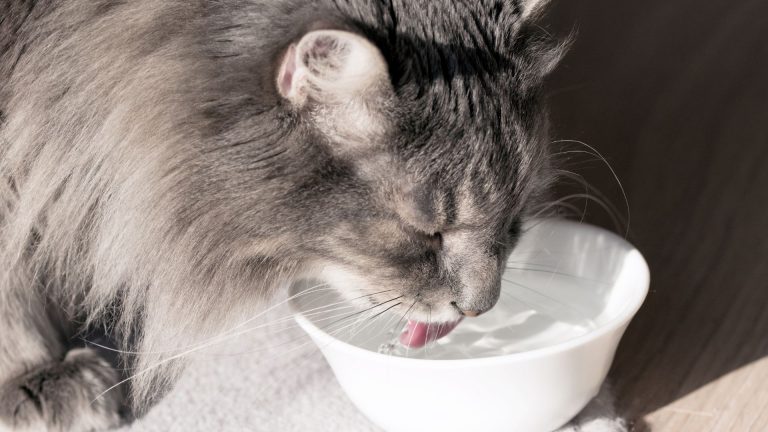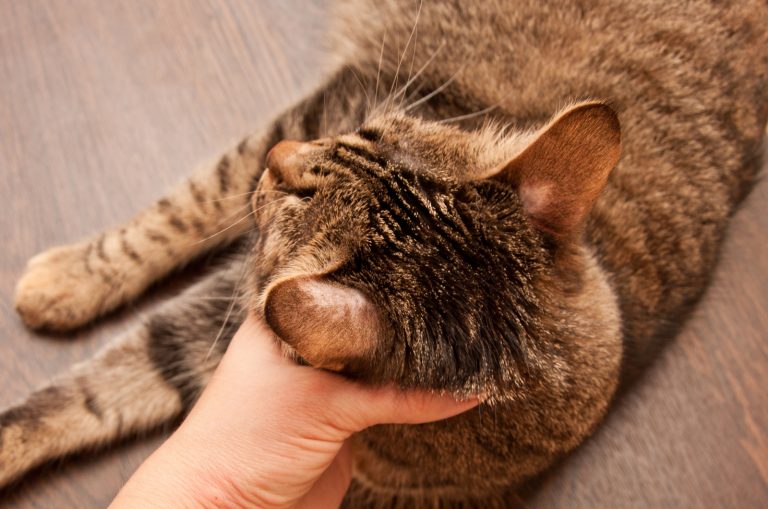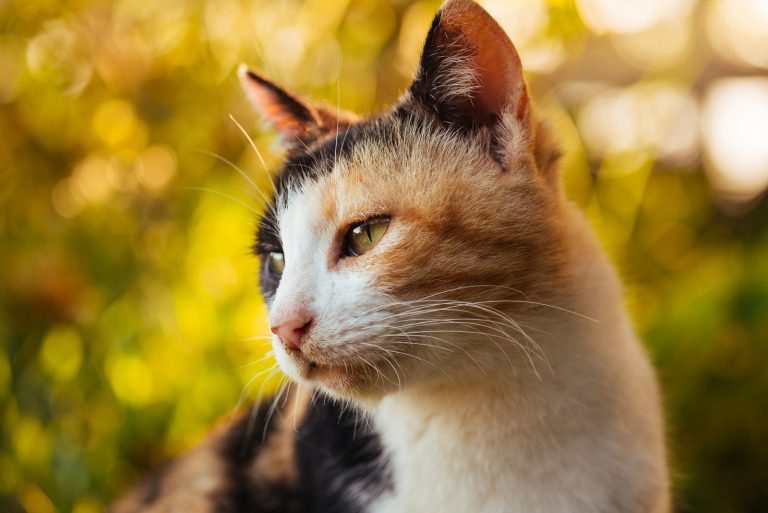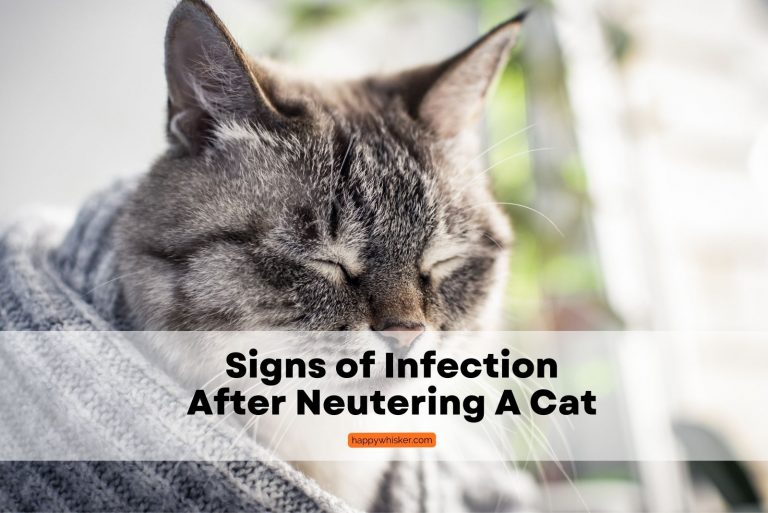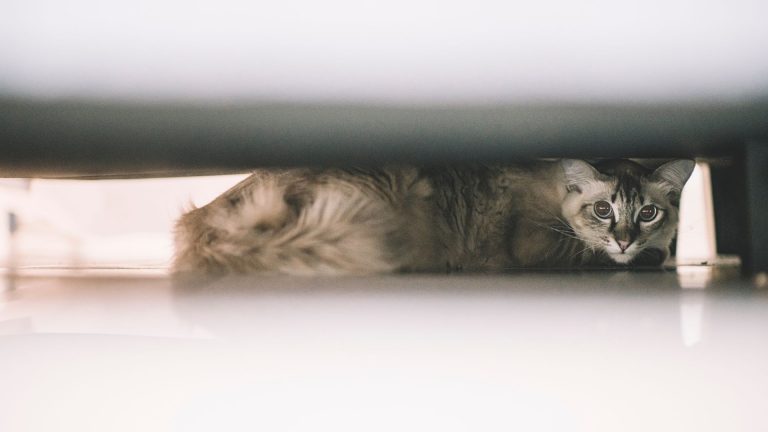8 Revealing Symptoms Of Dead Kitten Inside Cat
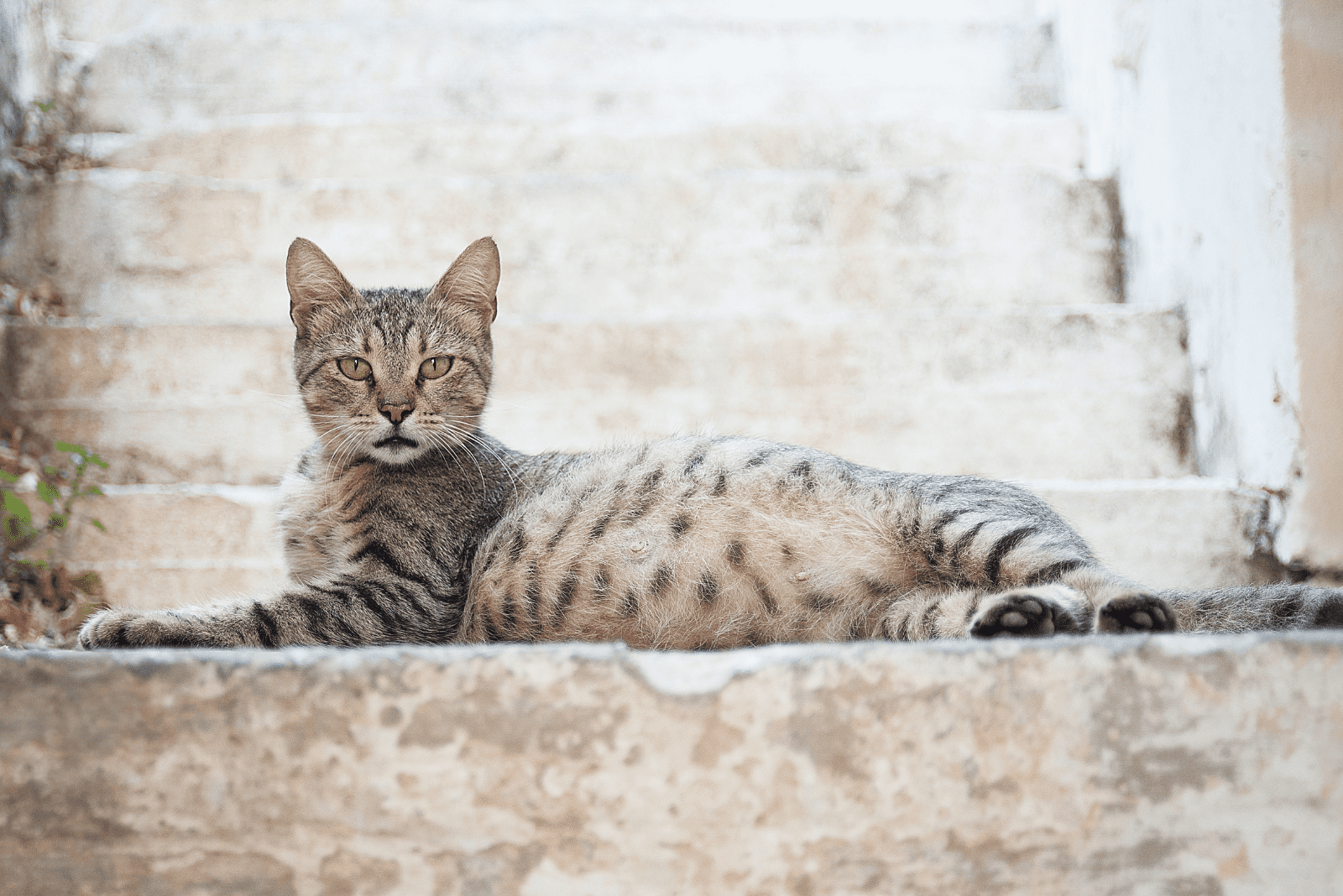
Expecting a new litter of kittens is an exciting time for every cat owner. Although everyone hopes for good outcomes, unfortunately, that is not always the case. There are many things that can go wrong during a cat’s pregnancy and labor. The difficult but important issue I would like to talk about today is when a mother cat has a dead kitten inside of her.
Cat owners usually don’t know that a cat has a dead kitten inside until the birth process starts to get a little complicated. This is why it is so important to be able to recognize the symptoms of a dead kitten inside a cat.
There are a number of signs that a cat may be carrying a dead kitten, including:
• Delivering fewer kittens than you thought she was carrying
• Labor has ended but you still feel a kitten in the cat’s abdomen
• The cat is groaning but not giving birth
• The cat is restless for several hours after “finishing labor”
• The cat is bleeding vaginally
• The cat is not focused on nursing her newborn kittens
• The last placenta has not come out
• The mother cat appears weak
I know all of this sounds scary (and it really is), but with proper care, the cat that’s carrying a dead kitten inside of her can deliver the stillborn kitten and stay healthy.
Let’s look into all the symptoms of dead kitten inside cat, including potential causes, what you should do if it happens and what you can do to prevent it. I highly suggest you continue reading!
8 Symptoms Of Dead Kitten Inside Cat: Explained
Let’s explore the details of each of the symptoms of this complex, but extremely important health complication.
1. The Cat Delivered Less Kittens Than You Know She’s Carrying

If a cat owner wants to know how many kittens their cat is carrying, they can find out by performing x-ray and ultrasound tests on the mother cat. This way, the exact number of kittens can be deduced.
When the cat is in labor, it’s important not to get caught up in all the excitement, but keep a close eye on how many kittens the cat has given birth to. Luckily, this is your easiest task of the day – you just need to count them.
If you observe that your cat’s labor has finished and there is a kitten (or kittens) missing, that is a red flag. That means the kitten is still in the cat’s womb and could potentially be dead.
Knowing how many kittens to expect will prevent you from thinking the labor is over when, in reality, there is one more kitten that needs to be delivered. Rarely, one kitten more than is expected is born (if the kitten somehow escaped being seen by the ultrasound or x-ray); but never one kitten less, as these two tests are extremely reliable.
Bear in mind that some cat breeds have typically large litters, while others tend to have significantly smaller litters. For example, Siamese cats usually have a large number of kittens in a litter, while Persian cats have small litters. For many female cats, their first litter has fewer kittens, so keep this in mind when managing your expectations for the number of kittens a cat is carrying.
2. The Cat Finished Laboring But You Can Still Feel A Kitten In Her Abdomen
One of the sure ways to know when a cat has finished labor is when you gently press on the cat’s abdomen and you don’t feel anything out of the ordinary, meaning no lumps. If you do feel a lump, that is most likely a sign that there is still a kitten inside the cat’s womb.
Sometimes, a cat can stop experiencing uterine contractions, stop straining, and start to nurse her newborn kittens. Those are the signs the cat’s labor is over. If you feel a lump in her abdomen, that means there is another kitten left behind. Sometimes, the kitten is already dead.
What should you do in this case? You can’t exactly explain to your cat that she still has one more kitten to deliver, so you need to take her to the vet. A cat not delivering all her kittens is very dangerous, so be sure to act fast!
3. The Cat Is Straining, But Not Delivering The Kitten
Straining is one of the tell-tale signs your cat is still in labor and knows she has more kittens to deliver. A lot of force is needed to push a kitten through the birth canal, so don’t be surprised by your cat’s behavioral changes, as well as different facial expressions than usual.
Straining usually lasts about 10 to 15 minutes and then the kitten is delivered. After the first kitten, kittens arrive every 15 minutes to an hour. If you observe your cat straining for a longer period of time and not delivering a kitten, that’s a major issue.
If your cat is straining a lot but not delivering a kitten, it’s a potential sign of an obstruction and dystocia (difficult birth). This is dangerous for both the cat and the kitten. Sometimes, the kitten is already dead and its death may be unrelated to the difficult birthing process.
4. The Cat Being Restless Many Hours After “Finishing Labor”
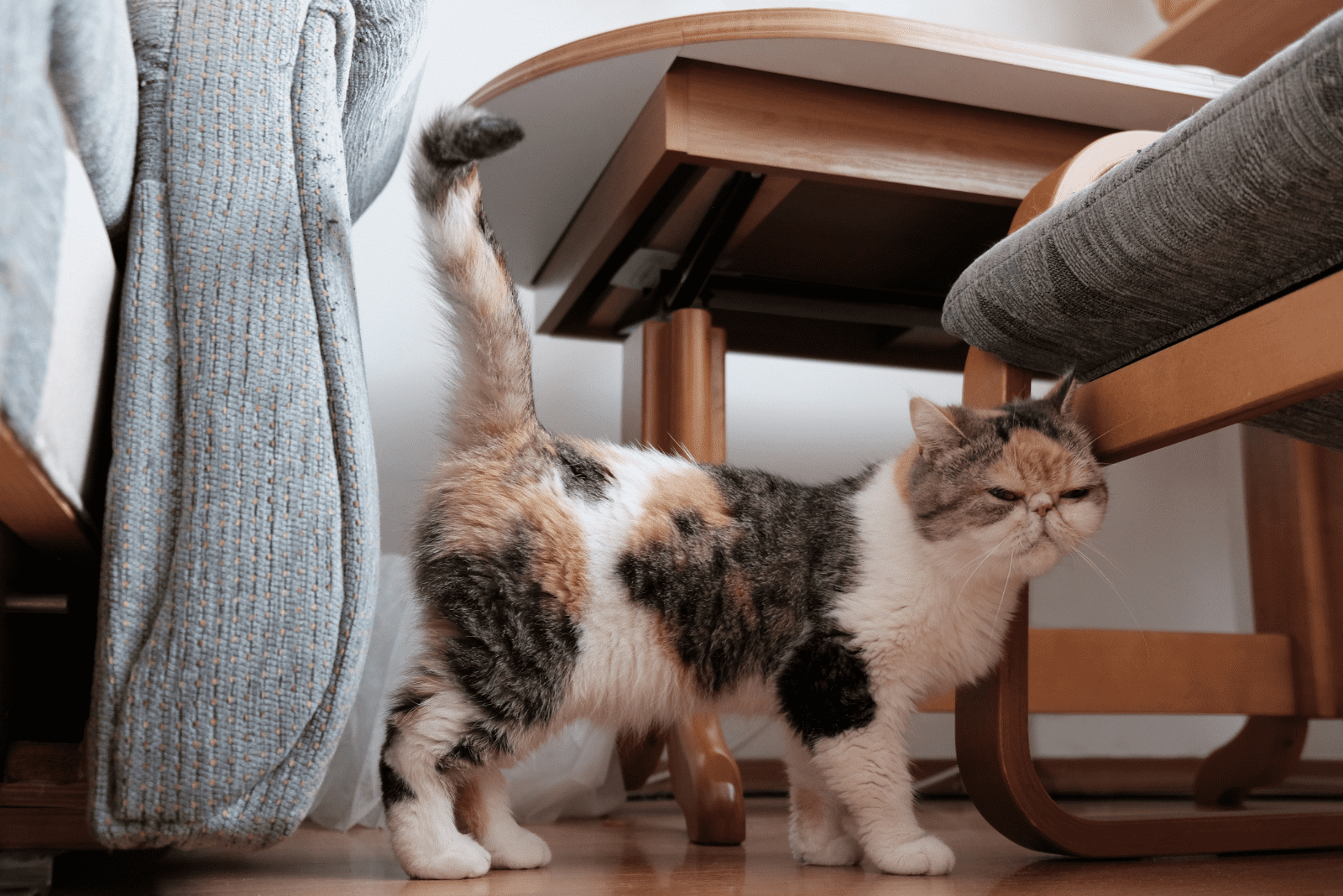
Indications that labor has stopped include your cat starting to settle down, acting more at ease and comfortable, and returning to her usual breathing pattern. On the other hand, a clear sign a cat has not finished giving birth is her being restless, agitated, stressed, and loudly meowing. As you can guess, labor is painful so a cat being restless is completely expected.
If you observe your cat being unsettled for a few hours after she has pushed the “last kitten” out, that is a potential indicator that your cat’s labor has not really ended and that there is still one more kitten left inside.
Seek immediate veterinary advice if you observe your cat being restless and very vocal with absolutely no signs of delivery of the last kitten. This is very dangerous, and at this stage there is a possibility the kitten is already dead. This is also dangerous for the mother cat as well, so be sure to act on time.
5. The Cat Is Experiencing Vaginal Bleeding
Vaginal bleeding is one of the most common signs of a dying kitten inside the mother cat. This can range from minor spotting to significant bleeding, and discharge may also be present. The bleeding could be ongoing or intermittent.
It must be noted that some blood is normal. During active labor, you can anticipate that a small amount of discharge will pass through the cat’s birth canal as the contractions intensify. The discharge may even have a faint bloody tint, this is quite normal. If your cat is bleeding heavily, call your veterinarian right away because this is almost always an indication that something is very wrong.
6. The Cat Not Being Focused On Nursing Her Newborn Kittens
One clear sign a cat has finished giving birth is it starting to devotedly nurse and care for her kittens. The mother cat will usually only focus on feeding and caring for her newborn kittens after all of the kittens have been delivered; most cats often wait until all of their kittens are born before giving them their undivided attention.
So, if you observe that your cat is still restless and not focusing on nursing her kittens, that means that the labor hasn’t finished yet and there is one more kitten (or kittens) on the way. The cat will show other symptoms of being agitated; it may meow loudly and frequently and even strain.
7. The Last Placenta Has Not Come Out
Delivering the placenta, often known as “afterbirth”, is a normal and necessary part of feline labor. Each kitten has its own placenta and the mother cat frequently eats them, as they are high in the essential nutrients a cat needs in order to restore its energy. Additionally, multiple placentas can be delivered simultaneously. Occasionally, before any of the placentas are passed, 2 or 3 kittens will be delivered. After each kitten is born, the cat will bite off the umbilical cord.
After each birth, the placenta should pass in around 15 minutes. If you’re waiting for the “last placenta” for more than 15 minutes, it could mean that there is one more kitten to be delivered, or even more than one!
Make sure the number of kittens equals the number of placentas; a retained placenta, (which occurs when the placenta is not delivered but instead remains inside the mother cat), can lead to several health issues for your cat.
8. The Mother Cat Appears Weak And Has A Fever
If the laboring cat is sick during labor, that’s a cause for concern. If a cat is experiencing a raised body temperature, vomiting, lethargy or not using the litter box properly, that is a potential sign that something is wrong with the laboring process, such as dystocia.
In veterinary medicine, an abnormal or difficult birth is referred to as dystocia. Uterine inertia (lack of uterine contractions) is a common cause of feline dystocia (difficult birth), but it must be noted that causes of dystocia can be due to either the mother or the kitten. Only 29% of dystocias are caused by the fetus, while the mother causes about 67% of them. The most effective treatment for this problem in both situations is a cesarean section.
Both the cat and the kittens have a fair chance of surviving if dystocia is treated quickly. However, it should be remembered that sometimes kittens can pass away as a result of delivery circumstances. Preventing these circumstances from occurring and seeing the veterinarian promptly will ensure that the mother and kittens survive together, preventing a sad ending.
This Is What You Should Do If You Notice A Mother Cat Has A Dead Kitten Inside Of Her
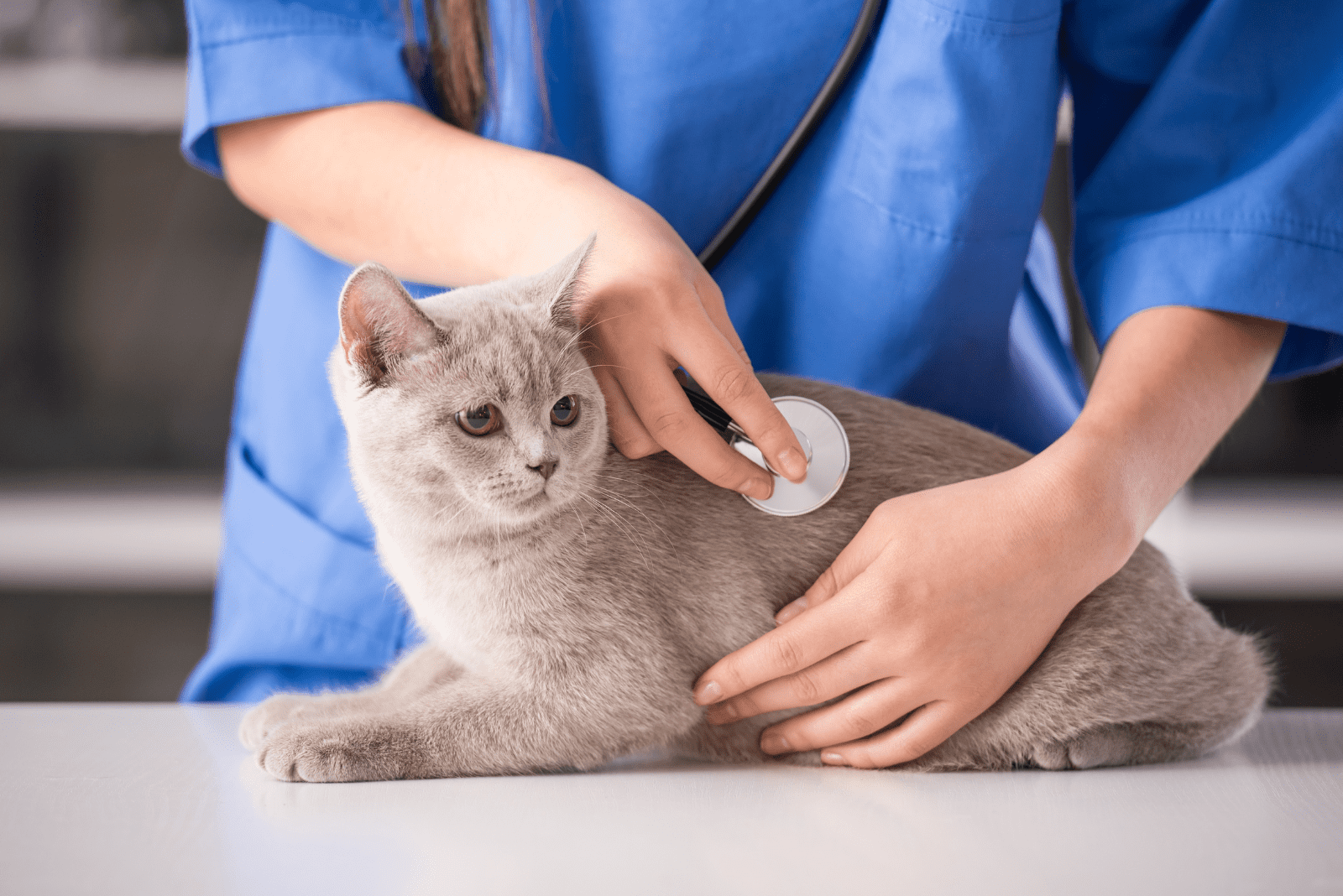
If you suspect your cat is experiencing symptoms as a result of having a dead kitten inside of her, you must act quickly. A dead kitten inside a cat, as well as the dead kitten’s placenta being undelivered can only mean one thing – an impending bacterial infection. Retained placenta, as well as the dead kitten, poses a life-threatening issue because they will soon start to decompose, which understandably can lead to many health issues for the mother cat.
Go to the veterinarian’s office as soon as you can. Your vet has been trained to handle these kinds of situations. Do this if the mother cat is not delivering the kitten for quite some time after delivering all the other kittens. The vet might give her an injection of oxytocin in order to stimulate uterine contractions. On the other hand, if the dead kitten cannot be delivered naturally by the cat, a cesarean section is the only solution.
If you observe your cat frequently delivering dead kittens, it may be best to spay her.
How Come It’s Possible For A Cat To Carry A Dead Kitten?
A cat will carry her kittens inside her for around 9 weeks while she is pregnant. In the event that a kitten dies during pregnancy, the mother cat may carry the body of the deceased kitten.
By using ultrasound or by feeling for the body of the deceased kitten inside the mother cat’s uterus, the veterinarian may be able to determine whether a kitten has passed away. The veterinarian can advise surgery to remove the dead kitten from the mother cat.
The mother cat may go into labor and deliver the deceased kitten together with the rest of her litter if the kitten passed away later in the pregnancy (approximately after the 7th week of gestation). A deceased kitten sometimes cannot leave its mother’s body naturally and requires surgical removal.
What Could Be The Cause Of A Dead Kitten Inside The Mother Cat?
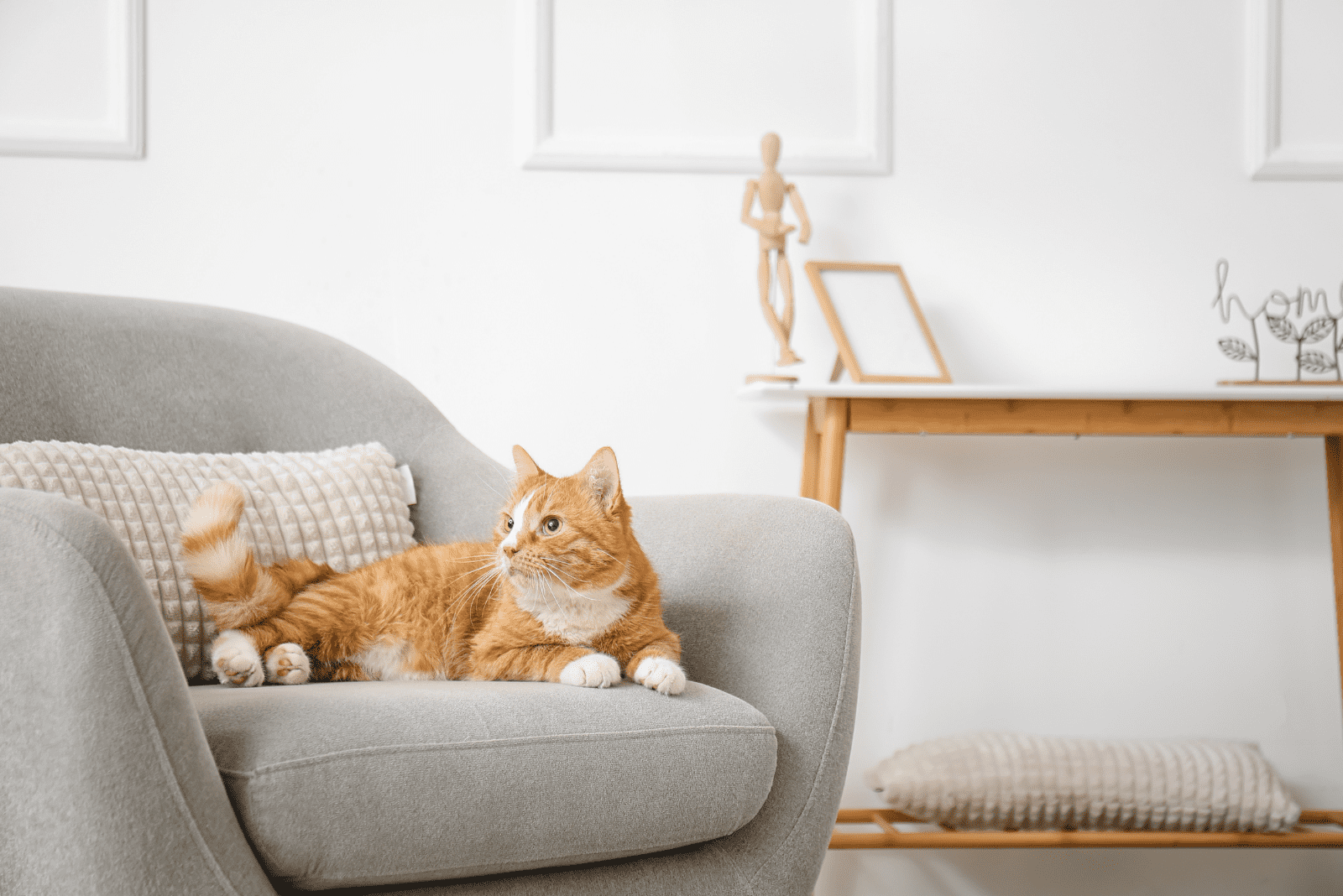
There are multiple reasons as to why a kitten might die while still inside the mother cat’s womb, so let’s go over the most important ones.
1. Congenital Abnormalities Of The Kitten
Severe congenital abnormalities often result in a stillbirth. These defects may be inherited or brought on by exposure to a substance (a toxin, for example) or a disease that interferes with normal fetal development.
Congenital diseases are more common in pedigree cats because inbreeding raises the chance of genetic disease.
kitten dies in utero due to a congenital defect early in the pregnancy, the queen may absorb the kitten or she may miscarry. A stillborn or fading kitten may be the result of a congenital abnormality if it develops late in the pregnancy.
2. Hormonal Imbalance
Hormones have a very important role in regulating feline pregnancy. Unfortunately, hormonal imbalance can lead to miscarriage.
Low levels of progesterone, the hormone responsible for maintaining a pregnancy, can result in miscarriage. Low progesterone levels can be caused by a variety of things, including medications.
3. Infections
Infections are a common cause of miscarriage in cats. They occur due to the presence of viruses, bacteria, or parasites (such as heartworm). Viral infections are among the most likely cause of miscarriages, and the most common causative agents are:
• Feline leukemia virus (FeLV)
• Feline immunodeficiency virus (FIV)
• Feline herpesvirus (FHV)
• Feline enteric coronavirus (FECV)
• Panleukopenia virus (FPV)
4. Injury
Although rare, it’s possible for a kitten to die inside a pregnant cat’s womb due to an injury sustained by the mother. That kind of injury can be sustained if someone kicks the cat really hard, a cat falls down from a higher ground, or is involved in a serious cat fight.
5. Dystocia
Birthing challenges are known medically as dystocia. This includes problems with either the mother or the fetus, such as uncomfortable placement and incorrect uterine and cervix contraction.
The term “obstructed dystocia” describes problems with a kitten’s size relative to their mother’s birth canal. Fetal deformity and improper placement of the fetus can develop from obstructed dystocia.
Serious complications due to dystocia can result in a kitten dying.
Can You Prevent A Kitten From Dying Inside A Cat?
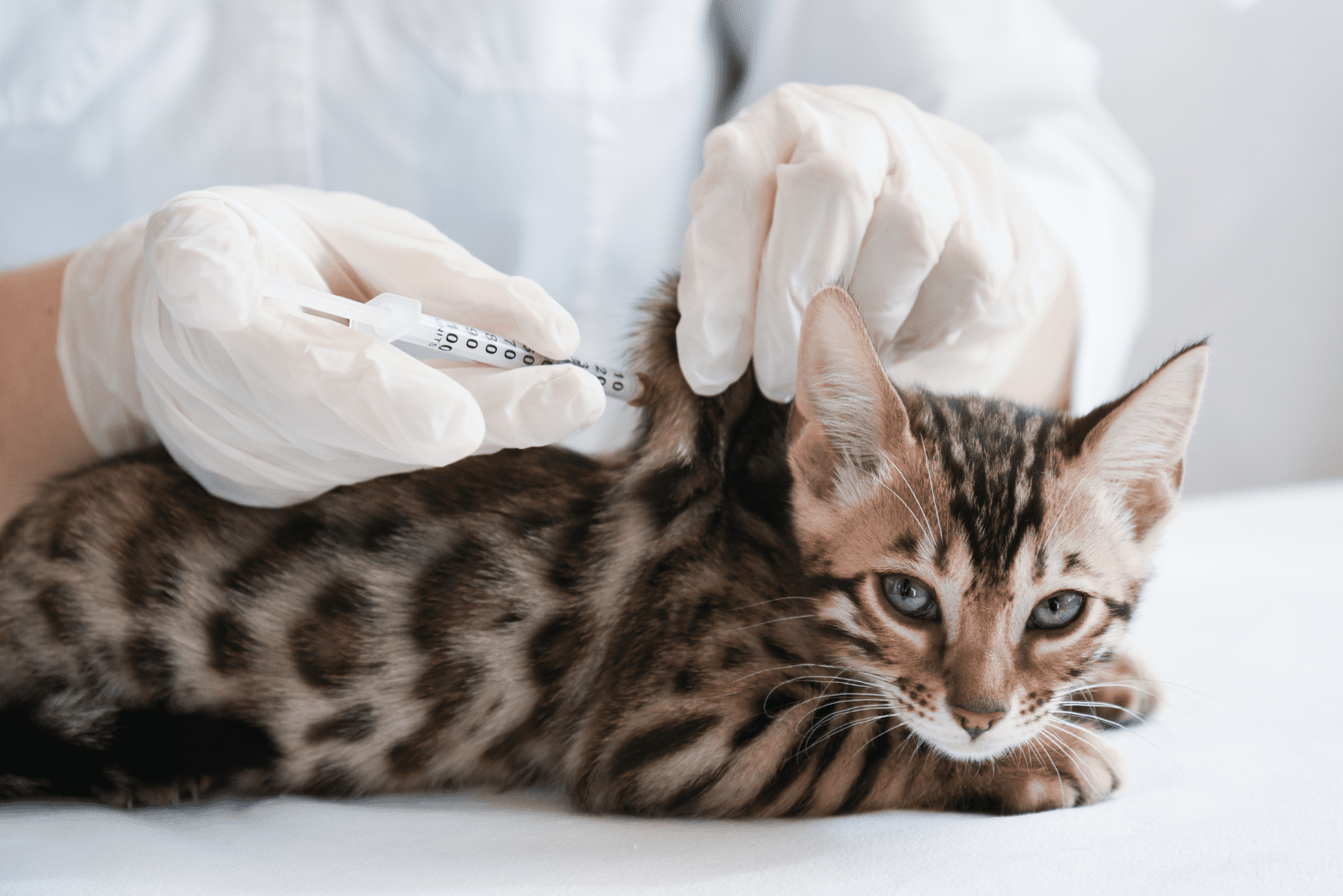
Although there isn’t a surefire way to ensure the mother cat brings all of her kittens alive and well into the world, there are some precautions you can take that will lower the chances of a kitten dying inside the womb.
1. Vaccination
As a major cause of stillbirth is viral infections, the best way to help your female cat deliver all her babies alive and well is to vaccinate the mother cat.
Feline vaccination is important for the overall health of a cat, not just for safe delivery. So, in order to ensure that certain viruses don’t cause a stillbirth, it’s best to vaccinate your cat on time!
2. Prevention Against Heartworm
Heartworm is a blood-borne parasite that poses a serious medical risk for a cat that contracts it. There is no cure for it, so prevention is the most important thing in order to ensure your cat’s health.
It is known that this parasitic infection can cause miscarriage in cats so it’s best to be informed about it. Your veterinarian will provide you with all the information you need in order to prevent heartworm infection.
3. Providing A Healthy Diet
The general medical status of the mother cat influences the health of her kittens. If the mother is strong and well, most likely the kittens will be too and that’s something every cat owner wishes for.
In order to ensure your cat’s health is at the optimum level, provide her with a balanced diet filled with proteins and essential nutrients. That way, her unborn kittens will be nourished and healthy too!
4. Lowering A Cat’s Exposure To Chemicals
Congenital defects aren’t always preventable, but lowering your cat’s exposure to various chemicals and toxins can significantly decrease the kittens’ chances of developing a defect due to the effects of a mutagenic chemical.
5. Looking Into Your Cat’s Medications
Fetal deformities and the subsequent death of a kitten can sometimes be caused by the medication the pregnant cat is taking.
Some medications are not safe for pregnant cats, usually because they have a negative influence on the unborn kittens.
Therefore, check with your vet that any medications your cat is taking are safe during pregnancy.
6. Go To Regular Vet Visits
Regular vet visits are important for pregnant cats as they can prevent stillbirths. Ultrasounds are commonly carried out in order to check on the health of the kittens inside her womb.
Your vet will guide you in how to handle your cat’s pregnancy and give you advice on ensuring your cat is safe and healthy.
FAQ
Can A Cat Deliver Dead Kittens?
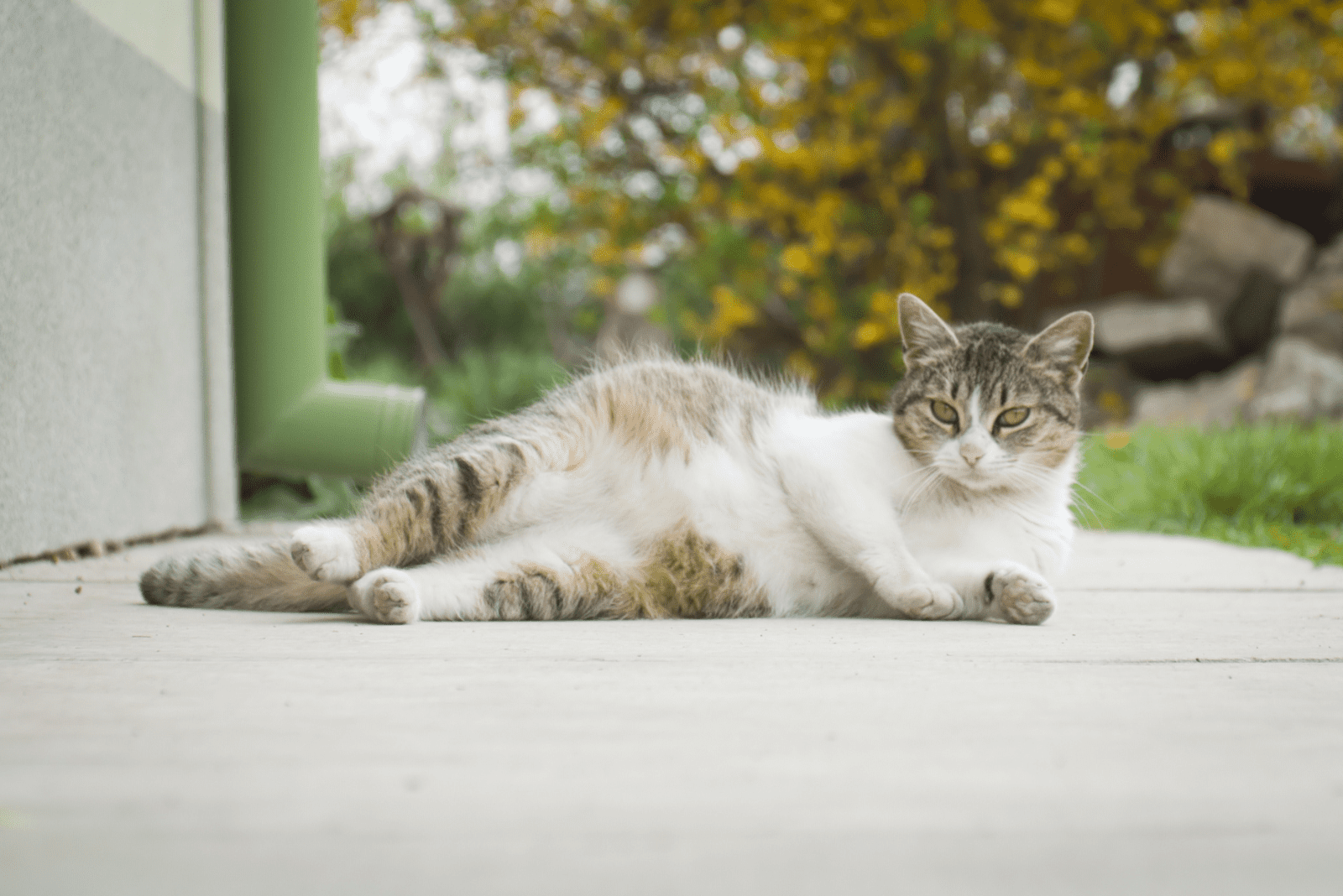
Yes, it is possible for a cat to deliver dead kittens. It is common for cats to deliver one stillborn kitten, while others are alive and healthy. Pedigreed cats are especially prone to delivering dead kittens, with a relatively high percentage of all delivered kittens from pedigreed cats being stillbirths.
Can A Cat Have A Dead Baby Inside?
Yes, it is possible for a cat to have a dead kitten in her womb, and it’s extremely important for the cat to deliver the deceased kitten. The dead kitten inside of her is a major health concern, and it should not remain in the cat’s womb any longer than the other kittens the mother cat was carrying. If a cat has a dead kitten inside of her and is not delivering it – that’s an issue that needs urgent veterinary care.
What Do I Do If My Cat Has A Dead Kitten?
If you know your cat has a dead kitten inside her womb, it is extremely important for your cat to deliver the dead kitten. That can happen either naturally or via C-section with your veterinarian.
If your cat delivers the dead kitten naturally in your home or backyard, allow your cat some time to realize her kitten is not alive. Mother cats may resort to eating the dead kitten, or burying it in the ground. Nevertheless, taking the dead kitten away from the mother suddenly is definitely not recommended.
How Do You Know If A Kitten Has Died?
The biggest sign a newborn kitten is dead is if it’s not moving nor breathing. Often, the stillborn kitten is also smaller than the other kittens and it may lack fur. Generally speaking, you will know by yourself when the newborn kitten is a stillborn.
In Conclusion
Every pet owner just wants their pets to be safe and healthy, and the same goes for owners of pregnant cats that are going into labor. It’s a stressful time for both the owner and the cat. Among many things that can go wrong is that the cat is carrying a dead kitten.
Symptoms of a dead kitten inside cat include a cat delivering fewer kittens than expected, finishing labor but you can feel a kitten in her abdomen, the cat straining but not delivering the kitten, the cat being restless many hours after labor has apparently ended, vaginal bleeding, the cat not being focused on nursing her newborn kittens, the last placenta not coming out, or the mother cat appearing weak or feverish.
Potential causes of kitten death in the womb include congenital abnormalities of the kitten, hormonal imbalance within the mother cat’s body, viral infection, or an injury such as might occur during a fall or fight.
Now you must be wondering: Is my cat at a high risk of having a dead kitten?
Every female cat has a chance of having a dead kitten inside her during pregnancy, but there are ways to lower the chances of that occurring. Every cat owner should vaccinate their cats in order to prevent viral infections that can cause kitten death, prevent heartworm infestation, provide a healthy diet, lower their cat’s exposure to mutagenic chemicals and medications, and go to regular veterinary check-ups.
I hope you find this article informative and don’t worry, I’m sure your feline friend will be perfectly fine with proper care!

